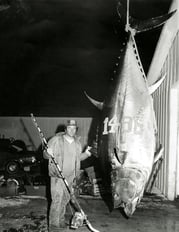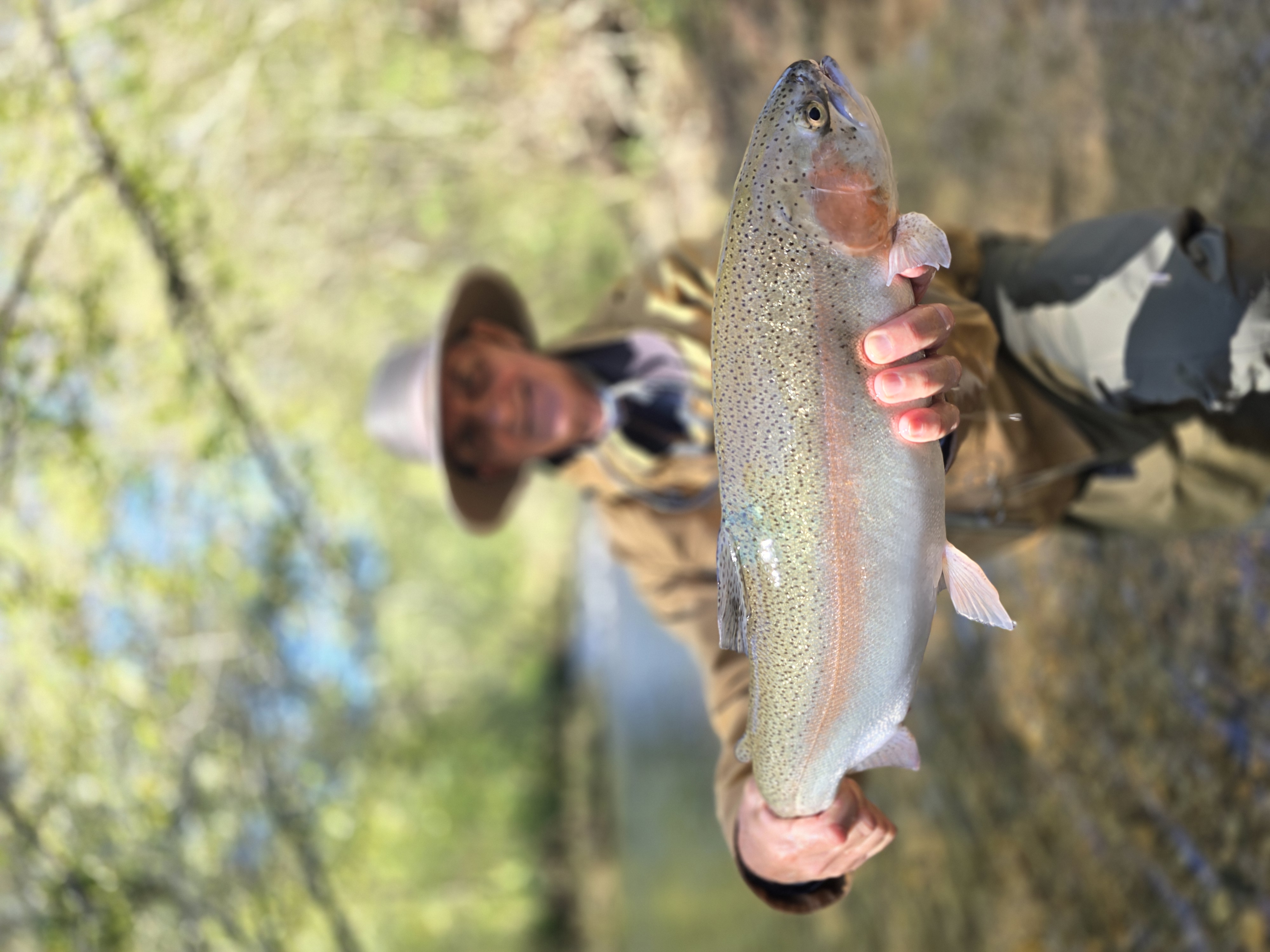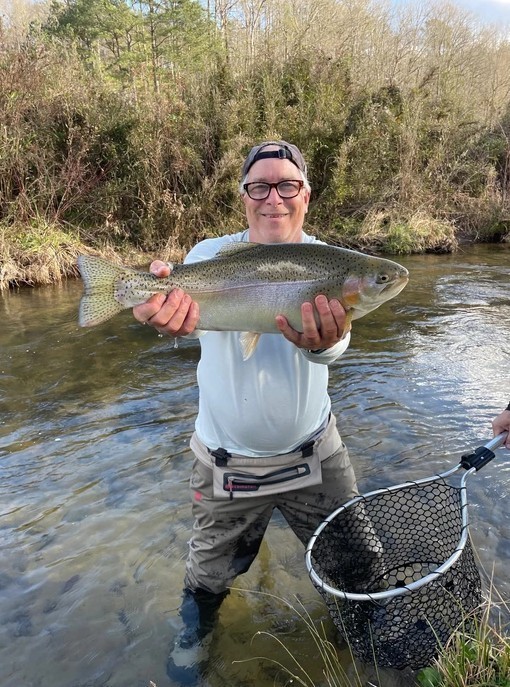Acadia ICE FISHING
Warm Water Guided Trips
Cold Water Guided Trips
River, Lake Fishing in Norfork
White River Spin Fishing Adventure
River, Lake Fishing in Norfork
White River Fly Fishing Trip
NC Trout Fly Fishing
Wild Trout Classic
Trophy Trout Special
Blue Ridge Trout Special
Appalachian Trout Slam
We started Captain Experiences to make it easy to book fishing and hunting guides around the world. With over 2,000 Damn Good Guides, our platform makes finding and booking a trip seamless. Head here to check out our trips.
Brook and Brown Trout
Brown trout can live in a wide variety of lakes and rivers which allows them to overlap with the more picky brook trout. Since these similarly sized fish with speckled bodies overlap in several areas, anglers have a hard time telling them apart from time to time. Knowing the difference between brook trout and brown trout can be tricky but here is how they compare.

What is a Brook Trout?
The brook trout (Salvelinus fontinalis), also known as the eastern brook trout, brook charr, coaster trout, squaretail, or mud trout, is a freshwater member of the salmon family Salmonidae. It is the state fish of nine states, including Michigan, New Hampshire, New Jersey, New York, North Carolina, Pennsylvania, Vermont, Virginia, West Virginia, and the Provincial Fish of Nova Scotia in Canada.
They have a dark green to brown color, a marble pattern of lighter shades, and red dots with blue circles around them across their sides and back. This pattern is called vermiculation. Their bellies are milk brown to reddish in coloring, becoming more red or even orange when they are spawning.
Depending on the location, a brook trout can vary from about eight to 24 inches and weigh from one to almost ten pounds. Growth rates of brook trout are dependent on the season, water and air temperatures, and flow rates of which the fish are in. These differences cause significant variance in sizes.
What is a Brown Trout?
The brown trout (Salmo trutta) is a diverse species of salmonid native to Europe and Asia that has been introduced globally and flourished in all other continents except Antarctica. Morphs of the species have expanded across multiple ecosystems, including rivers, lakes, and oceans, some even migrating between them. Lake trout, for example, are potamodromous, meaning they migrate from lakes to rivers or streams to spawn, whereas sea trout are anadromous, meaning they will migrate from oceans to freshwater.
Due to the multiple morphs and environments inhabited by brown trout, their appearance will vary. Freshwater brown trout will range from coloring that is so silvery and lightly spotted that they will be mistaken for rainbow trout to the well-known brassy brown spotted top that fades into a creamy white belly. There are also regional variants, such as the Loch Leven trout, found in Scotland, which can be identified by their larger fins, slimmer body, and heavy black spotting.
Although they have a large footing worldwide, brown trout are much less plentiful than their cousins, the rainbow trout, though they do tend to live in the same cooler waters. Brown trout are also much more challenging to catch than rainbow trout, making them a worthy prize to even the most skilled anglers. These exceptional game properties were the driver to introduce them into so many environments across the world.
Brown trout are medium-sized fish that vary significantly in size according to their environment. In some rare cases, they can grow to over 40 pounds and 20 inches long. However, in smaller rivers, they can weigh less than 2.2 pounds. An average brown trout is around 2 to 10 pounds and between 12 and 14 inches long.
Brook Trout Brown Trout Hybrid
When a brook and brown trout breed the resulting hybrid is called a tiger trout. Unlike cutbow trout, tiger trout are sterile and cannot reproduce. These fish are known for their vivid colors and distinct markings. These fish have pronounced tiger stripes like the parent brook trout covering their brow and gray body.
These fish are known to primarily feed on other fish making them useful for controlling populations of other fish species. This behavior makes tiger trout popular for fish stocking programs. On Average, tiger trout reach 10 to 16 inches long but can grow up to 20 inches and five pounds.
Brook and Brown Trout Compared
Brown trout are more tolerant of a variety of water conditions compared to the brook trout which only thrives in clean and cool rivers. These two fish have a similar average size and weigh but brown trout are capable of growing much larger. Both fish are both commonly referred to as trout but brook trout are actually a species of char. The visual difference between these two species is fairly distinct and they can easily be distinguished from one another.
The easiest way to tell these species apart is by looking at the lower fins which will have white edges on a brook trout but not on brown trout. Another indicator is tail spots which are present on brook trout but not on brown trout. While these fish are very different, tiger trout share visual similarities with both parent species. If you want to catch any of these three species, check out our trout guides and get in on the action.
Joey Butrus
Updated on July 31, 2023

June 28, 2023

January 7, 2022

June 3, 2021

May 13, 2024

July 1, 2024
Related Articles
September 13, 2019
May 23, 2022
May 18, 2022
Featured Locations
- Fishing Charters Near Me
- Austin Fishing Guides
- Biloxi Fishing Charters
- Bradenton Fishing Charters
- Cabo San Lucas Fishing Charters
- Cancun Fishing Charters
- Cape Coral Fishing Charters
- Charleston Fishing Charters
- Clearwater Fishing Charters
- Corpus Christi Fishing Charters
- Crystal River Fishing Charters
- Dauphin Island Fishing Charters
- Daytona Beach Fishing Charters
- Destin Fishing Charters
- Fort Lauderdale Fishing Charters
- Fort Myers Fishing Charters
- Fort Walton Beach Fishing Charters
- Galveston Fishing Charters
- Gulf Shores Fishing Charters
- Hatteras Fishing Charters
- Hilton Head Fishing Charters
- Islamorada Fishing Charters
- Jacksonville Fishing Charters
- Jupiter Fishing Charters
- Key Largo Fishing Charters
- Key West Fishing Charters
- Kona Fishing Charters
- Lakeside Marblehead Fishing Charters
- Marathon Fishing Charters
- Marco Island Fishing Charters
- Miami Fishing Charters
- Montauk Fishing Charters
- Morehead City Fishing Charters
- Naples Fishing Charters
- New Orleans Fishing Charters
- New Smyrna Beach Fishing Charters
- Ocean City Fishing Charters
- Orange Beach Fishing Charters
- Panama City Beach Fishing Charters
- Pensacola Fishing Charters
- Pompano Beach Fishing Charters
- Port Aransas Fishing Charters
- Port Orange Fishing Charters
- Rockport Fishing Charters
- San Diego Fishing Charters
- San Juan Fishing Charters
- Sarasota Fishing Charters
- South Padre Island Fishing Charters
- St. Augustine Fishing Charters
- St. Petersburg Fishing Charters
- Tampa Fishing Charters
- Tarpon Springs Fishing Charters
- Venice Fishing Charters
- Virginia Beach Fishing Charters
- West Palm Beach Fishing Charters
- Wilmington Fishing Charters
- Wrightsville Beach Fishing Charters

































